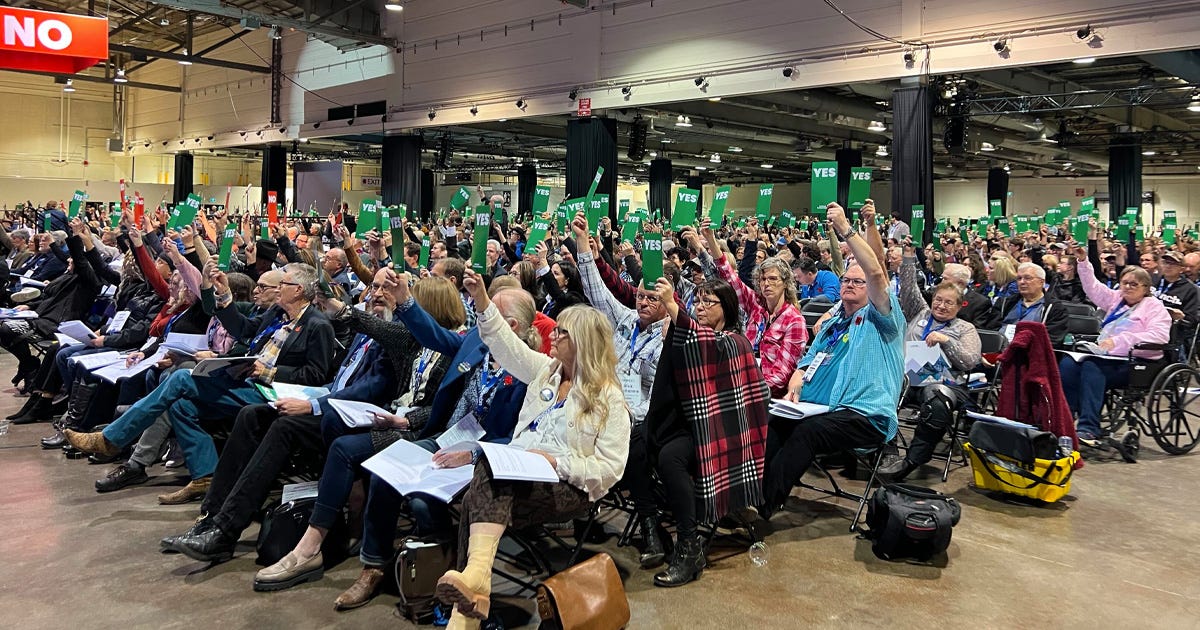EXCLUSIVE: Policy resolution at UCP convention wants to scrap no-fault insurance
A Calgary lawyer is fighting back against Alberta’s “Care-First” auto insurance model, demanding that the UCP adopt a popular policy resolution to scrap the incoming no-fault system.
A Calgary lawyer is fighting back against Alberta’s “Care-First” auto insurance model, demanding that the United Conservative Party adopt a popular policy resolution to scrap the incoming no-fault system, which he argues strips accident victims of their rights and empowers insurance companies.
The resolution calls on the provincial government to repeal the no-fault insurance and revert to a tort-based system.
“Repealing the no-fault insurance legislation in Alberta and returning to a tort-based system aligns with conservative values by promoting personal responsibility and accountability, ensuring fair compensation based on fault and reducing fraudulent claims. This approach encourages safer driving behaviours and ensures that only legitimate claims are compensated,” reads the resolution’s rationale.
In an interview with True North, Tyler Van Vliet, an associate with Crash Lawyers in Calgary, said reverting to the previous system would “preserve the basic right of an injured person to bring a claim against the driver who hurt them and to have an independent judge assess their losses.”
He added it would also preserve accountability, explaining that a tort system means a negligent driver and their insurer bear the cost. In a Care-First system, the at-fault driver’s main consequence is a premium hike, which already exists under a tort system.
“That’s a very different moral universe. Repeal would keep Alberta in a world where fault still matters and where the person who broke it pays to fix it,” said Van Vliet.
He said three main concerns arose from switching to a Care-First model. Firstly, losing the right to sue, which mirrors B.C.’s Enhanced Care model that barred lawsuits in almost all situations. He claimed Alberta was copying that model “almost line-for-line.”
Another concern is that decision-making power would shift from the courts to insurers. Van Vliet explained that in B.C., injured people have had to fight insurers for basic support, with recourse happening in lower tribunals and billion-dollar insurers winning 90 per cent of the time.
“That is not meaningful access to justice,” he said.
Van Vliet’s third concern is that a “Care-First” model disproportionately harms the most vulnerable. He noted that disability advocates in B.C. have already launched constitutional challenges against no-fault insurance, arguing it severely impacts individuals with serious physical and mental impairments.
Alberta recently unveiled draft injury compensation rules, slated for 2027. These rules propose payments ranging from $945 for the loss of colour vision to $56,717 for the loss of an eye, and up to $66,169 for a moderate traumatic brain injury.
Van Vliet explained this approach depersonalizes injury, as a 19-year-old trades worker and a senior suffering the same knee injury would face vastly different real-world consequences.
“A chart cannot do justice to those differences; a judge can,” he said.
Van Vliet added that it would reverse the normal burden of proof.
“Under tort, you start with full rights, and a judge decides what you’re owed. Under a meat-chart style system, you start with whatever number the chart spits out, and you’re left begging the insurer to make exceptions with no legal recourse or support,” he said.
When it comes to Conservative values, Van Vliet explained that a tort system aligns more with the principles than a Care-First system does.
“If you drive negligently and injure someone, you—through your insurer—are required to make them whole. That’s the civil-law equivalent of “do the crime, do the time.” No-fault, by design, removes that link: everyone’s claims are socialized through their own insurer, and the at-fault driver mostly faces a rating change,” he said.
The tort system aligns with Conservative values by emphasizing accountability and the rule of law. Removing most legal scrutiny through Care-First primarily benefits large insurance companies.
“It’s no surprise that every other jurisdiction in Canada that has brought in no-fault has done so under socialist provincial governments,” said Van Vliet. “Once you abolish the right to sue for auto injuries, it is very hard to get it back. BC is now locked into years of litigation and political fights over Enhanced Care’s constitutionality and fairness. Alberta doesn’t need to repeat that experiment just to discover the same problems.”
Alberta Premier Danielle Smith previously defended the change, arguing that “people are going to be unhappy either way.”
Even if this is true, Van Vliet said not all systems are morally equivalent.
The Alberta UCP initially promised the change would save Albertans $400 a year, but later omitted that promise.
The injury lawyer added that the Insurance Bureau is now claiming Albertans will not only see no savings, but premiums will actually increase under a “care-first” model.
Van Vliet argued there is a better way: keep the tort system while tightening minor-injury caps, strengthening fraud controls and improving rate transparency.
“So while no model is perfect, there is a clear line between systems that preserve fundamental rights and accountability and those that don’t. We should be honest about that choice instead of shrugging and saying ‘everyone will be unhappy anyway,’” he said.
The Ministry of Finance previously told True North it is open to stakeholder feedback before finalizing regulations.




This is one time I agree with a lawyer. Scrap it, I can't believe that the UCP came up with this idea. When it was already tried and failed in other province's.
The auto insurance companies in Alberta have had decades of opportunity to make billions of dollars in profit at the expense of the no-fault insurance laws in Alberta. It looks like we will now see and exodus of auto insurance companies flee Alberta if no-fault insurance is removed. In addition, if no-fault insurance is removed, expect auto insurance premiums to sky rocket and make the cost of driving in Alberta hugely more expensive.......